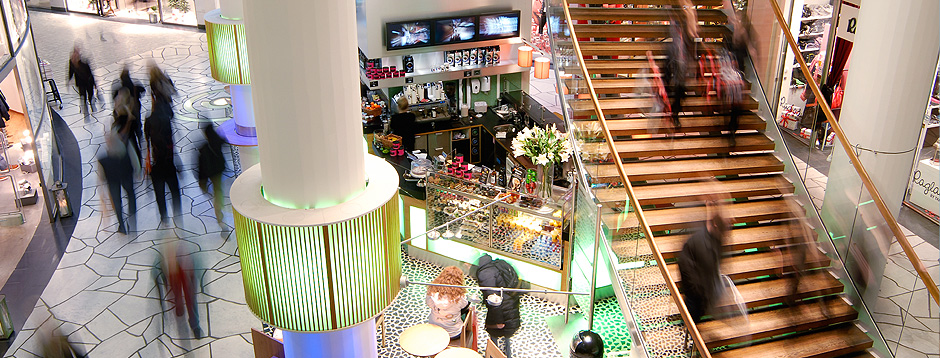Vasakronan is easily the biggest property owner in Sweden. With approximately 10 billion Euros worth in properties, which are primarily rented out as office space or shopping centers, the real estate giant is home to the majority of companies in the country. Yet, rather than conjuring up an image of bleak cubicles rented out to just anyone, Henrik Eriksson, head of workplace strategies and tenant advisory, is very well aware of the importance of design and flexibility when it comes to meeting workers needs.
As the population of digital nomads increases and the traditional office is undergoing a significant transformation, Eriksson is looking for ways to create spaces where the CEO of a company and a freelancer can work side by side with the feeling that both their needs are perfectly met.
Hi Henrik. As a major player in the property business, how do you see the relationship between a traditional office space and the “social workplace”?
I believe that the more traditional corporations or businesses are starting to see that the future of business is no longer how they once understood it to be. They realize that there is important knowledge and rich pools of resources available in open-source workspaces where people communicate easily, and even collaborate if they want.
When I attended the Coworking Europe Conference in Lisbon last year, I really saw a divide between those who were working from the heart and those individuals that saw coworking as a business opportunity. Neither approach is wrong, but I think that both models are naturally drifting towards one another and they need to find a way to work together.
How does Vasakronan play a role in the development of Social Workplaces?
We would definitely like to be a thought leader. As the largest landlord in Sweden, our properties are focused on space where people flow, such as office spaces and shopping centers. Where people flow revenue can be made, if it’s done well.
The role of the landlord can be very important, and we know that coworking spaces face difficulties with that, especially when it comes to paying rent. If you do it right implementing a social environment into the workplace can increase flow, productivity and revenue.
Do you see yourself more as a facility, a service, or a hospitality provider?
We are definitely a facility. We are a landlord that provides office space that is functional and flexible.
What kind of tenants do you typically have in your workspaces?
I would say that we have around 80 percent companies and 20 percent freelance tenants. There are people who are looking to lease property in the best location to start a franchise, and also those who are working on projects, which focus on community and sustainability.
As a landlord, have you observed changes in the way people want to work?
Overall we can see that not only businesses are becoming more agile, by encouraging their workers to work in more non-traditional spaces, but also that society on the whole is becoming more agile. In Sweden we just at the beginning of this transformation, but I am sure we will see more of these areas hosting digital nomads.
To what extent is Vasakronan different from any traditional office environment and how does design play into that?
We are very different in the ways in which we think about space, which absolutely plays a big role. I am a firm believer that stimuli in the physical environment can result in positive cognitive changes.
There needs to be space for socializing, relaxing and also productivity. There are some companies that make money by fitting out an ideal working environment, but at Vasakronan we do not like to base our design on current behaviors because they change so much over time within a space. We like to see what works, and then adapt to their needs over time using the space.
What kinds of changes have you seen from workers?
We have seen workers using space in ways we didn’t predict. We may have thought, “okay, this is a sitting/relaxation area”, but people are actually much more active and social in this space. At Vasakronan we apply design thinking, which follows the line of: make a prototype, see what works, who reacts how and to what, and take it from there.
We make a lot of changes to space using furniture. That is a lot more coast effective, rather than moving walls, for example.
Are freelancers an important client for you? What are the challenges of creating a productive workplace for workers today?
In an increasingly digital and knowledgeable society, yes, freelancers become more and more important.
When I think about the challenges of creating a productive and attractive workplace, I think about nightclubs. In Stockholm we have 2 or 3 nightclubs, which are still in their original state since the 1980s, but the rest have completely changed or closed down. It is hard to maintain same concept overtime and keep people interested. For me, it is the same with business.
Can you please explain?
For example, the manager of a club must be aware of what people want, subsequently providing relevant content, while also making it accessible and interesting. New and growing businesses must also do the same. For example, we see that the event market is becoming more explicit. Gong to a conference used to be a break from work, but now people really have the urge for serendipity, and simultaneously realize that they can capitalize on these events.
We are moving out of a time where people do things simply for monetary gain, but who also realize the importance of social capital.





0 Comments